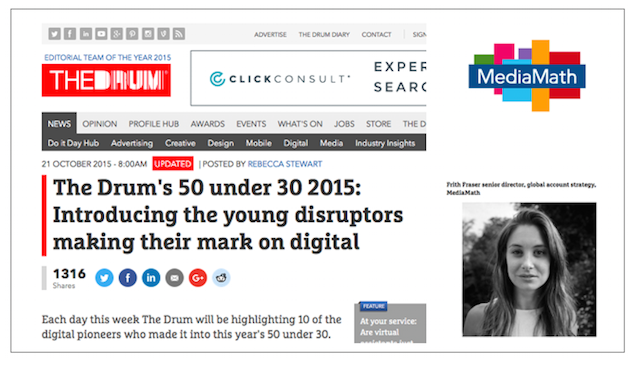Do you ever feel like no matter how hard you try to communicate, somehow your message just doesn’t come across the way you want it to? Communicating face to face, or, in the now more common way, through electronic media, is super challenging. Selecting the right words and delivering your message in an engaging way takes work. At MediaMath, we understand the power of communicating effectively with your audience across channels. Different channels require different messages, while the multi-faceted make-up of global audiences further complicates matters.
We let our marketing experts communicate our company’s mission to the world. But keep in mind there are many micro-communications that must happen on various levels within the walls of MediaMath every day and in every department in order to deliver on that mission. The same challenges of word choice and tone find their way into these daily interactions, and also require work and practice (and a dash of patience) to yield productive results and foster sound relationships. Marketing is communication of brand and product. Done right, it establishes and builds a connection from company to consumer. At the individual level, professional communication deepens understanding, enables collaboration and builds trust – when executed skillfully.
How achievable is good communication?
We know what we want to say (sometimes) and we imagine that our message will be clear and interpreted correctly by our listeners. But when it comes out, sometimes our message gets lost or we may start to become self-conscious and lose our grove. Relax, it happens to us all. Take a deep breath and resume. If it happens most of the time or more than you are comfortable with, it’s time to turn more of your attention to what’s going on. There are many factors affecting our ability to communicate such as differences in culture, our communication style, how we perceive ourselves and how we think others perceive us all collaborate
With all of these factors, how can we ever hope to improve our communication abilities? What does it matter if we are an expert in our field? As long as your work product is good, do you actually need to worry about effective communication? You know the answer or you wouldn’t be reading this blog post on communicating. To highlight the importance of communicating, consider these work-related areas requiring verbal skills:
- Announcing an innovation
- Negotiating deals
- Motivating your team
- Collaborating
- Describing ideas or findings
- Networking
- Coaching
- Brainstorming
- Resolving conflict or confusion
- Giving praise or encouragement
- Constructive feedback
- Sharing your accomplishments with your manager
- Speaking in public talks and presentations
If you are a professional in any field, you are communicating. This could be overwhelming to think about. To make it manageable, let’s distill the focus of our exploration down to styles, contexts and essential tips for improvement, which can be applied to every type of communication you will find yourself involved in.
Styles
There are a variety of approaches to classifying communication style. Popular ones include levels of aggressiveness, assertiveness and passivity. Another approach looks at whether you’re a Doer/Thinker, Influencer/Connector. You could be an Analytical, Intuitive, Functional or Personal communicator. Communication can be informal or formal, and I encourage you to find a style of execution that is somewhere in the middle between formal and informal no matter how else you are classified. Embrace a style that you can shift easily depending on the context you’re in and who you are communicating with. Make sure it feels natural. Levels of formality in how we communicate are shaped by our culture and upbringing, but you can modify this if you focus some attention on the environment you are in and how you are generally received. Adaptability will enable you to know when and how to modify your communication style if you increase your awareness. Take a communication quiz to see where you fall.
Contexts
Do you find it easier to communicate 1-1 or in small groups? Prefer live, face-to-face meetings or virtual contact? We need to be effective in all kinds of environments– live/virtual–including meetings and, at times, in front of larger groups. Many people fear public speaking, yet the same style you apply to your more intimate communication scenarios can apply there, too, just amplified a bit. If you have the opportunity to do public speaking, stand up and say yes. If you have already tried it and found it daunting or challenging, re-examine the experience to find out why. When delivering a talk or speech, you are basically having a conversation with 20, 50 or 100 or more people—yes, en masse they are still just people. Treat them that way and it is a lot less scary. Build your confidence—watch this TED Talk for a primer.
Getting Started
To begin your path to better communication, consider these tips and resources:
- Listen to those speakers and conversationalists who seem to have great ease with communicating—you will find some things to borrow and incorporate into your own communication style.
- Being able to make information meaningful and engaging requires adding some human elements like passion for the subject or emphasis on important aspects using tone variations.
- Ask questions and listen to your audience.
- Be authentic: be yourself; know your topic.
- Open up and risk being vulnerable to be great!
- Learn to tell a story: make it short, lively and include an element of surprise.










